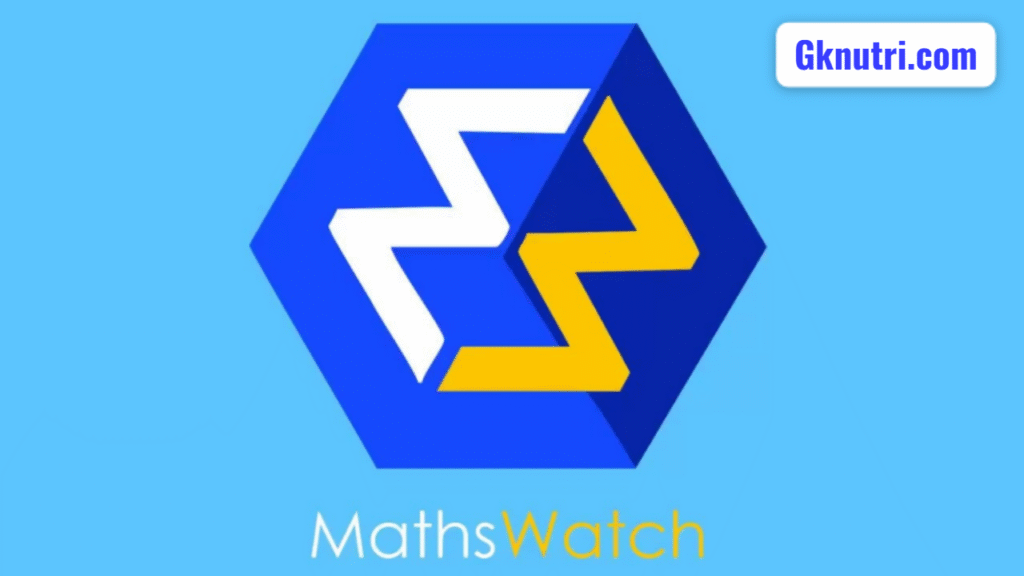
What Is MathsWatch and Why Is It Important?
MathsWatch is a comprehensive online mathematics learning platform widely used across secondary schools in the UK. Tailored to match the National Curriculum and major exam boards such as AQA, Edexcel, and OCR, it supports students through a blend of interactive video tutorials, instant feedback quizzes, and downloadable worksheets. What makes MathsWatch particularly effective is its ability to integrate teaching and assessment in one place, offering students a structured path for independent learning while allowing teachers to track progress in real time. With its user-friendly interface and focus on core mathematical concepts, MathsWatch enhances both classroom learning and homework practice, making it a valuable tool for boosting academic performance and preparing students for future success in math-related fields.
Understanding the Core Features of MathsWatch
At its core, mathswatch is designed with simplicity and functionality. Students log in and instantly gain access to a wide library of math video tutorials, each accompanied by related tasks and quizzes. These resources are sorted by GCSE topics, KS3 lessons, and foundation or higher-level tiers. The platform’s “Interactive Questions” tool mimics exam-style problems and provides automatic feedback once the student submits an answer. This immediate response loop strengthens the learning process by reinforcing correct techniques and identifying misconceptions. Furthermore, teachers have tools to assign homework, monitor time spent on each task, and track accuracy — making it a data-rich system that enhances traditional classroom instruction. Whether you’re preparing for a mock exam or brushing up on algebra, MathsWatch provides everything in one clean interface.
How MathsWatch Is Transforming Math Education in Schools
MathsWatch has dramatically changed how math is taught in many UK schools. Traditional chalk-and-talk teaching methods are giving way to flipped classrooms and hybrid learning models. With the help of MathsWatch, students can review lessons at home before class and then spend school time on discussion and practice. This model increases classroom efficiency and empowers students to take more ownership of their education.

The video content also acts as a 24/7 tutor, enabling learners to pause, rewind, and rewatch explanations as needed—something no in-person teacher can offer. This tech-enhanced model has particularly helped students struggling with learning difficulties or anxiety, as they can study at their own pace. Teachers benefit too: less time spent on grading and more time guiding students through complex problems.
Who Should Use MathsWatch and What Can They Expect?
MathsWatch is ideal for secondary school students aged 11–16, but it’s also useful for younger learners advancing quickly, or older learners revisiting math for functional skills exams or employment qualifications. It supports both Key Stage 3 and Key Stage 4 learners, meaning that it’s suitable for early secondary right through to GCSEs. What users can expect is a clear structure: select your topic (e.g., simultaneous equations), watch a relevant video, attempt questions, and get instant feedback. For students, this builds confidence and promotes autonomy. For schools, it offers standardized learning that aligns closely with curriculum benchmarks. Parents, too, benefit because they can track their child’s progress using the platform’s reporting tools. Whether you’re weak in fractions or struggling with Pythagoras, MathsWatch delivers real-time clarity.
The Video-Based Learning Method: Why It Works
One of the most engaging features of mathswatch is its video-based learning approach. Every topic has a short, to-the-point video usually 2 to 6 minutes long. The voiceover is clear, the visuals are well-animated, and the examples used are contextually relevant to UK examinations. Research shows that video learning increases retention by up to 90% compared to traditional textbook reading. Students often find it easier to digest information when it’s explained visually, especially abstract math concepts like trigonometry or quadratic equations. MathsWatch leverages this by making video content the backbone of its learning system. Users can pause, rewatch, or fast-forward depending on their comfort level. This customizable pace of learning is one of the biggest strengths of the platform.
How Teachers Use MathsWatch to Improve Outcomes
From a teacher’s perspective, MathsWatch provides several powerful tools for classroom management and academic planning. Teachers can assign homework digitally with set deadlines and clear grading rubrics. The platform automatically marks many types of questions, particularly multiple choice, number entry, and short responses. It also keeps a record of each student’s performance, enabling educators to identify patterns — such as topics a class collectively struggles with. Teachers can then revisit these areas in lessons. Additionally, teachers have access to diagnostic reports showing how long each student spent on a task and how many attempts they made. This promotes accountability and encourages students to stay engaged. In effect, MathsWatch helps teachers work smarter by automating tasks while still providing robust support for personalized instruction.
Student Perspective: Navigating the MathsWatch Dashboard
The mathswatch student dashboard is designed to be intuitive. After logging in, students see assigned tasks, a search bar for specific topics, and performance analytics. The layout makes it easy to jump between lessons or revisit previously viewed videos. The “My Progress” tab tracks achievements over time, letting students see how they’re improving. A particularly motivating feature is the ‘video watched’ tracker and completion percentage — similar to how Netflix tracks your viewing. This adds a gamified feel, which is especially effective for younger students. There’s also a “Practice Questions” section where students can test their understanding without pressure. Navigation is fast, mobile-friendly, and works well on tablets or school-issued Chromebooks. For independent learners, it provides a structured yet flexible learning path.
MathsWatch vs Other EdTech Platforms
| Feature | MathsWatch | MyMaths | HegartyMaths | Khan Academy |
| Curriculum-Specific Videos | ✅ Yes | ⚠️ Partial | ✅ Yes | ❌ No |
| Interactive Homework | ✅ Yes | ✅ Yes | ✅ Yes | ⚠️ Limited |
| Real-Time Feedback | ✅ Yes | ❌ No | ✅ Yes | ✅ Yes |
| UK Syllabus Alignment | ✅ Yes | ✅ Yes | ✅ Yes | ❌ No |
| Teacher Analytics | ✅ Advanced | ✅ Basic | ✅ Advanced | ❌ No |
Common Challenges Faced While Using MathsWatch
Despite its many strengths, MathsWatch isn’t without drawbacks. Some students report the platform can feel repetitive, especially when teachers rely too heavily on it for every homework assignment. Others mention that the automatic marking system is too rigid—for example, minor input errors (like a missing decimal point) may lead to incorrect grading even if the method is right. Additionally, not all question types support step-by-step feedback, which can be frustrating if a student is genuinely confused. The interface, while functional, may feel outdated to digital-native students used to more immersive apps. Lastly, accessibility for learners with disabilities could be improved, as some features lack screen-reader optimization. Addressing these gaps could take MathsWatch from good to great.
Customizing Study Plans With MathsWatch
One of the platform’s hidden gems is the ability to build custom study plans. Teachers can assign full-topic modules or select specific lessons tailored to each student’s needs. For students revising independently, this means you can map your own revision timetable based on upcoming assessments. mathswatch allows filtering by topic, level, and even past paper links. You can create a self-directed path through algebra, geometry, or statistics based on your weak points. Students who want to aim for a Grade 9 in GCSEs can filter for higher-tier tasks and focus accordingly. This feature makes it especially useful during exam seasons, allowing for high-impact revision in a focused timeframe.
MathsWatch for Parents: Monitoring Without Micromanaging
Parents often feel helpless when it comes to helping with homework, especially in subjects like mathematics. MathsWatch bridges this gap by providing parent access codes and report views. These show homework completion, scores, and the amount of time spent on each activity. This offers transparency without needing to hover over your child. Parents can use this data to schedule study sessions, encourage better habits, or consult with teachers if any issues arise. Unlike paper-based homework, there’s no ambiguity — every attempt is timestamped and graded. This reduces stress and enables more positive home-school collaboration, benefiting both the child and the academic outcome.
Advantages of Using MathsWatch
- Curriculum-aligned content across KS3 and GCSE levels
- Instant feedback helps students learn from mistakes immediately
- Data tracking tools empower both teachers and students
- Mobile compatibility supports learning anytime, anywhere
- Structured learning path enhances independent study
Is MathsWatch Suitable for Exam Preparation?
Yes, MathsWatch is exceptionally well-suited for GCSE exam preparation. Students can focus their revision by filtering questions by difficulty and topic. Many lessons even include past paper-style questions that mirror what students will face on exam day.

The real-time progress reports act as personal analytics — showing strengths and areas for improvement. Students can use this to spend more time on weak spots and less on topics they’ve mastered. For time-pressured exam revision, MathsWatch offers a smart and efficient way to study that’s superior to passive textbook reading.
Real Stories from Students and Teachers
A Year 11 student from Birmingham stated, “mathswatch helped me jump from a Grade 4 to a Grade 7 in six months. I just followed the video tutorials and practiced daily.” Another testimonial from a teacher reads, “Homework marking used to take me hours — now it’s done automatically, and I spend that time doing what matters: teaching.” These stories are echoed across the UK, especially in schools with limited resources. By making math more accessible, MathsWatch is closing achievement gaps and fostering better learner engagement.
Enhancing Classroom Dynamics with MathsWatch
When integrated effectively, MathsWatch can transform a passive classroom into an interactive learning environment. Teachers assign a topic for homework, students learn the content through video, and classroom time is used for active problem-solving. This not only enhances student participation but also allows for differentiated learning. Stronger students can move ahead, while those struggling can revisit earlier topics. It reduces performance pressure and gives educators the flexibility to use group activities, competitions, or peer tutoring. Over time, this contributes to a more dynamic and inclusive classroom culture.
The Future of Maths Learning with MathsWatch
In an age where digital tools are rapidly shaping education, mathswatch proves that edtech done right can revolutionize how students engage with core subjects like mathematics. Its blend of structured content, instant feedback, and adaptable learning makes it more than just a homework tool—it’s a full-fledged learning ecosystem. For parents, students, and teachers alike, MathsWatch offers an intelligent way to meet academic goals, one topic at a time. As technology evolves, we can expect even more personalized, engaging, and accessible math learning experiences through platforms like this.
FAQs About MathsWatch
Q1. Is MathsWatch free to use?
No, MathsWatch is subscription-based and requires a license, usually paid for by schools. However, students typically access it free through school credentials.
Q2. Can I use MathsWatch for A-level mathematics?
Currently, MathsWatch is focused on KS3 and GCSE-level content. It’s not designed for A-levels but may help with foundational concepts.
Q3. Does MathsWatch work on phones and tablets?
Yes, the platform is mobile-responsive and works well on smartphones, tablets, and Chromebooks.





